A recent study by the Robert Wood Johnson Foundation found that nearly three in four physicians say that unnecessary tests and interventions represent a serious problem in the health care system. Yet, while most practitioners feel a strong responsibility to help patients avoid unnecessary care or overly invasive procedures, some practices continue even after clinical evidence has suggested a better way.
Moving past the status quo can be difficult, but sometimes rocking the boat can cause a wave of quality improvement that enhances outcomes and reduces costs.
Choose Wisely
It helps to have evidence-based tools to guide decision making, and the ABIM Foundation’s Choosing Wisely initiative provides 300 of them. This initiative involves a list of overused procedures and tests that may be unnecessary or even harmful. They were identified and vetted by national professional organizations such as AMDA—The Society for Post-Acute and Long Term Care Medicine—and the American Geriatrics Society.
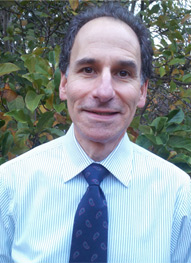
The Choosing Wisely initiative, through the use of this list and supportive information and materials, encourages practitioners and patients to have discussions that ensure the best possible care decisions.
“All of these things are about good care. Choosing Wisely puts it in a framework, and that is helpful,” says Daniel Haimowitz, MD, CMD, a multifacility medical director in Pennsylvania. “I’ve given talks about the issues on the Choosing Wisely list to communities, physician groups, and hospital physicians, and this information has been well received.”
Recurring Issues
“A lot of things could be done differently or better in all settings, including post-acute and long term care. We selected these items because they came up again and again when we asked our committee to identify their top concerns. We wanted issues that had lots of evidence behind them and were ‘impactable,’” says Barney Spivack, MD, CMD, national medical director, Medicare case and condition management, for Optum in Trumbull, Conn., one of the practitioners who worked on the AMDA recommendations for the Choosing Wisely list.
“We’ve talked about some of these topics for years. But even issues that seem like old news come up all the time,” says Haimowitz.
Thomas Edmondson, MD, FACP, CMD, a Maryland-based medical director, who also worked with AMDA on its Choosing Wisely items, agrees.
For example, not obtaining a urine culture unless there are “clear signs and symptoms” that the problem originates in the urinary tract “goes back about 20 years. We’re still fighting the same battles,” he says.
The Choosing Wisely items are useful tools to help nursing facilities and practitioners accomplish goals such as preventing avoidable readmissions.
“All of these items represent evidence-based best practices, and you can incorporate them into your educational messaging,” says Haimowitz. When a facility targets an area for improvement, team leaders can use them to focus on specific issues to address.
For example, says Haimowitz, “Say you want to look at antibiotic stewardship, part of it might be over treating asymptomatic bacterium. You can use Choosing Wisely to look at how you might be over-ordering or over-treating urine cultures and if you’re matching goals of care with treatment.”
So why are some tests and interventions still being used after clinical evidence has called them into question or proven them ineffective? There are many reasons, but Edmondson suggests, “Expectations sometimes are too low. We don’t expect enough of all of our team leaders. It’s easier to follow the path of least resistance when it comes to care.”
Yes, Rock The Boat
For example, he talks about feeding tubes. When people lose the ability to use a knife and fork but not to chew and swallow, he says, they can benefit from oral nutrition, but it takes time—up to 45 minutes—to feed them.
Unfortunately, he observes, busy, overburdened staff often try to finish the feedings quickly or they mistakenly think the person is full before he or she is. As a result, the patient loses weight and is put on a feeding tube.
“This is easier and more financially feasible for the facility. They don’t have to enable more staff time for feedings or hire more staff, and Medicare will pay for the feeding tube,” Edmondson says.
“At the same time, families often are satisfied because they don’t have to worry about mom or dad not eating. They mistakenly think this is better for their loved one,” he says.
David Smith, MD, CMD, president of Geriatric Consultants in Brownwood, Texas, adds that physicians outside of the long term/post-acute care setting—such as surgeons—often don’t know that feeding tubes don’t benefit, and, frankly, they don’t have to deal with the “downstream” care and implications such as family disappointment when their loved one doesn’t improve.
Why Old Methods Persist
Smith talks further about why some of these procedures and tests perpetuate. For example, of sliding scale insulin, he says, “Some practitioners don’t know about the benefits of basal bolus insulin [a treatment regimen that includes an injection at each meal] in this population. But, more important, it’s easier for the prescriber to believe that the patient’s eating intake is so erratic that they can’t use basal bolus. This rationale is the easy way out.”
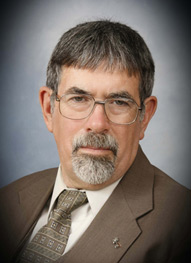
One issue that continues to drive the call for urine testing, Smith suggests, is that “geropsych wards often won’t accept patients without clean urinalysis because of the role urinary tract infections may play in behavioral issues.” He adds, “While there is no way I would ascribe behavioral issues simply to ‘dirty urine,’ these wards often don’t want to take patients with multiple illnesses and will use this as an excuse not to admit them.”
While the Centers for Medicare & Medicaid Services’ (CMS’) focus on reducing antipsychotic use in long term care has made this a priority issue for many facilities and practitioners, it is worth addressing in Choosing Wisely because many patients with dementia who exhibit serious behavioral issues continue to be prescribed antipsychotics.
“While the physician and care team ideally should be looking for root causes of behaviors and address these with nonpharmacologic interventions, this is very difficult and time-consuming,” Smith says. At the same time, there is no clear path for physicians to get paid for this work. Additionally, he says, “If the team identifies and implements nonpharmacologic therapies and interventions, these efforts seldom have 100 percent efficacy and they often require huge amounts of unreimburseable staff time.”
Meanwhile, he adds, “Medications are quick and easy, and they are covered by Medicare.”
As for the recommendation of not using lipid-lowering medications in patients with limited life expectancies, Smith suggests that this could be extrapolated to apply to many drugs in the long term care demographic. Drugs that take time to demonstrate benefit aren’t practical in patients who aren’t expected to live long.
“These regimens make no sense at all and simply increase costs and the need for monitoring and follow-up,” he says. Unfortunately, he adds, “Guidelines often don’t acknowledge that people age out of these treatments.”
The Hospitalization Decision
Whether or not to pursue hospital-level care, Smith says, is a conversation that definitely needs to be held more broadly.
“The hospital is a dangerous place for many frail elders. For example, those with dementia will be adversely affected by changes in the physical environment, unfamiliar caregivers, and multiple new drugs, and this may cause delirium,” Smith says.
The more frail and elderly patients are, the less likely they are to benefit from the technology available in the hospital, he says. “At least one study has shown that there is no mortality benefit of placing someone over age 80” in the Intensive Care Unit, he says.
Finally, he observes that “even with the best efforts,” transfer information can be mismanaged.
Nonetheless, frail elders continue to go to the hospital, often because they don’t have advance directives and families mistakenly think a hospital visit will benefit their loved one.
The Choosing Wisely campaign is timely, Smith says, as managed care and accountable care organizations continue to perpetuate—and practitioners and facilities are mandated to provide—care that is thoughtful, evidence-based, person-centered, and cost-effective.
At the same time, he says, “We are on the cusp of recognizing the limits of technologic care for this patient population and the value of a more palliative approach that will be more beneficial to these individuals and their families.”
Spivack agrees: “At some point in this population, discussions about treatment become less relevant and we focus more on comfort and quality of life.” He adds, “We need to concentrate on what is important to each individual at this particular time and address that. If we follow this path, it becomes easier to do things that make sense.”
Getting The Ball Rolling
The need for change is clear. The question is how to get practitioners, staff, family members, and others to have productive conversations about goals of care; what interventions are likely to successfully address their goals; and which ones are likely to be unproductive, wasteful, or even potentially harmful.
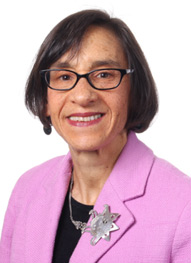
There is no easy answer or quick fix. Like it or not, team leaders can expect to encounter resistance and to drag some people kicking and screaming to a new way of doing things.
“A lot has to do with what people believe and what is a problem for them,” says Barbara Resnick, PhD, CRNP, FAAN, FAANP, professor at the University of Maryland School of Nursing in Baltimore.
People need to see a benefit of change for them, and leaders should be prepared to offer more than simply, “It’s the right thing to do.” Nonetheless, while clinical change isn’t easy, there is much nursing facility leaders can do to get the ball rolling.
The good news, Smith suggests, is that physicians and other clinicians increasingly are “willing to look at current evidence-based medicine. We are teaching medicine differently. Physicians are no longer allowed to rely on eminence-based medicine and are more likely to rely on evidence-based medicine.”
Solid Evidence Can Be Persuasive
Evidence-based, well-validated tools and information can be especially useful in influencing practitioners such as physicians. “Some clinicians respond to evidence and data. If you show people where they stand compared with others, this can be influential. If their numbers are way off, it is more likely to make a difference,” Haimowitz says.
While clinical evidence is important, says Nancy Lerner, RN, DNP, assistant professor at the University of Maryland School of Nursing in Baltimore, it takes time to get it to the right people.
“If we do research on anything, we conduct the study, write up the results, submit it, and get it published. The time frame is two to three years. Information doesn’t get out fast enough.”
It takes 10 to 15 years before research findings become standards of care in hospitals and nursing facilities, says Spivack, even when there is good evidence for the findings from day one.
Marie Boltz, RN, PhD, GNP-BC, FAAN, associate professor at the Boston College Connell School of Nursing, observes that even when clinical evidence does get to the care team, it’s not necessarily immediately practical or useable.
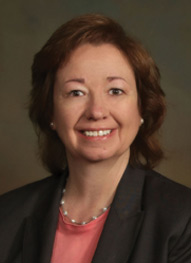
“Research usually is done in a more sterile environment. That isn’t how the real world operates. The nursing home has staffing issues, routines, leadership values, etc., that determine when there can be change and how it’s initiating,” she says. “There is a need to translate research into practice to help us understand how to apply and use the evidence.”
Medical Director As Facilitator
When evidence and data still don’t do the trick, it may help for the medical director to talk one-to-one with change-resistant practitioners.
“The medical director can find out what the barriers are for that person and what it will take to support their use of best practices,” says Boltz.
“There are well-intentioned individuals with a hospital focus providing care” in the long term/post-acute care setting, Spivack says. “As more of an emphasis is put on continuity of care, they may not be taking advantage of the clinical expertise and information about long term care,” he adds. “This is where the medical director and a well-informed team can play a role—pointing people in the right direction.”
Spivack stresses that the medical director is key in influencing clinical behavior. “He or she can start and encourage conversations based on clinical evidence and support staff when issues arise.”
Lerner adds, “Physician-to-physician counseling is most effective. Especially older physicians are more likely to respond to a colleague. This is an important role for the medical director.”
Edmondson emphasizes that administrators need to support their clinical teams. “They need to be able to say, ‘I want this to happen,’ instead of just, ‘Well, I hired staff to do this.’” Administrators’ actions and attitudes have more effect on clinical teams than they realize, he says. At the same time, Edmondson says, “The medical director needs to support the administrator and help promote culture change with the nursing staff and other practitioners, whatever it takes.”
Whether leadership includes a clinician or not, Boltz says, “they should be well informed. They should be connected with academics and professional organizations such as AMDA and the Geronotological Advanced Practice Nurses Association.” Additionally, they should be open to change and committed to creating learning communities of like-minded people who support change.
Taking The Captain’s Seat
One drive to encourage change is pocketbook pain or pleasure, observers agree. “When reimbursement is structured to hold caregivers accountable and reward results, everyone is motivated to change,” says Smith.
Haimowitz agrees. “Things are quick to catch on when there is a financial imperative, such as monetary penalties or losing a Five-Star rating.” Edmondson says that while reimbursement and regulations often drive change, he suggests that providers take the driver’s seat.
“Because our industry has a focus on the bottom line and census, we’ve forfeited our responsibility for expectations to the federal government. We have bodies such as CMS telling us to do things like reducing antipsychotic use,” he says. “We need to take back our issues” and focus on quality, he says. This doesn’t mean ignoring costs, as quality care often is cost-effective, especially when it reduces the use of unnecessary medications, tests, procedures, and fewer hospitalizations.
According to Edmondson, “We need to help families understand that there is a better way to provide care and that they can help support the nursing staff, physician, and administration by working with them to address concerns collaboratively,” he says.
Four-Step Approach
Resnick has made increasing function and physical activity a priority at several nursing facilities, and she has found success with a four-step approach. She starts by identifying an internal champion to work with her. Then, together they look at the facility policies and environment to assess its preparedness for change. Next comes staff education, including the identification of appropriate goals for each resident. Finally, they mentor and motivate staff and residents alike.
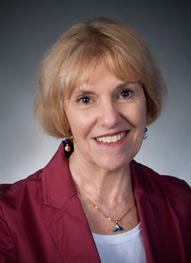
“We use tenets of social cognitive theory when we hit barriers,” Resnick says. “If people are resistant, we use verbal encouragement, set small goals, and eliminate unpleasant sensations. And we reward good behavior.
While all steps are important, she stresses that you can’t progress without a champion. “You have to have a cheerleader. People have to believe in what you are trying to do.”
Don’t expect change to happen quickly, she cautions. “We start to notice change after about four months,” she says, but “don’t expect to rest on your laurels just because you meet a milestone. You have to stay with it. You have to live and breathe it 24/7. It’s hard work.”
Patience is a quality everyone involved in clinical change needs to possess. As Edmondson says, “People often get frustrated when nothing happens the day after they make a change. But nothing will happen overnight or even in a year. At least two years are required for true culture change—and make no mistake—this is what we’re talking about.”
Don’t Forget Families And Patients
When facilities are promoting clinical change, they can’t forget family members, and Choosing Wisely is specifically designed to encourage and support communication with families.
“When people know what you’re doing and why, it makes a real difference,” says Lerner. The Choosing Wisely tools give team members the information—and the confidence—to discuss issues and make good decisions about a person’s care that is right for him or her and supported by the family.
“We need to remember who is in those nursing home beds,” Spivack says. “They’re often frail and [have dementia] and/or multiple comorbidities.” The Choosing Wisely list includes issues that are very specific to residents, and these items encourage and enable open, honest, and productive conversations about how to care for them as their physical and mental status declines.
Time for Change
“We need to make it easier to provide the right kind of change to happen. To ensure lasting change requires a systems approach,” says Spivack.
For example, if there is an order for an indwelling catheter and there isn’t a good indication for it, the medical director and team should question it, and the policies should support it.
“There is an ongoing need for education and support so people can be encouraged to ask questions and steer things in the right direction. Patient safety is wrapped around this.”
In the end, Spivack suggests, “The focus has to be turned around to what makes the most sense and what will improve care and quality of life for people as long as they live in our facility.”
Joanne Kaldy is a freelance writer and communications consultant based in Harrisburg, Pa.